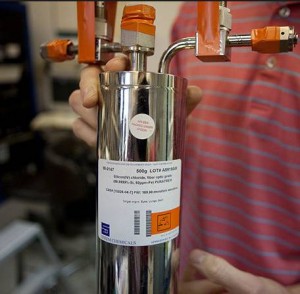High-Efficiency Solar Cells Enlarge Its Market Share and Challenge
Before the development of high efficiency solar cell, there are two main types of photovoltaic material. The first is the photovoltaic battery based on solid silicon, this is very efficient, but at the same time the price is relatively expensive. The second is thin film cells, it is relatively cheap, but in the use effect, it is a bit poorer. In 2010, researchers found and create new solar panel material, which can better instead of solar cells. This new materials combined with the above two kinds of material advantages, it has relatively low cost and high energy efficiency.
Thanks to the significant conversion effort taken hold in the photovoltaic (PV) industry, higher solar efficiencies will account for at least 30% of crystalline silicon (c-Si) cells and modules by 2015, which could be the industry’s best hope to prevent further price and margin erosion.
High-efficiency solar units accounts for just 14% in 2011 of the total market for c-Si cells, which is responsible for converting the sun’s energy into electricity in solar panels. Instead, standard-efficiency cells utilizing older technology contributed 86% of the whole market
The market share of high-efficiency cells, however, could climb very quickly in four years to 31%, if the industry employs any number of conversion technologies to achieve greater solar adaptation—a prospect that appears to be making headway in the industry. Most of the high efficiency volume in early 2011 is from SunPower. and Japan’s Sanyo Electric, but several other players also are expected to roll out their offerings during the course of the year.
A higher-efficiency cell adopted advanced conversion techniques to increase solar efficiency anywhere from 0.3% to as much as 5%. However, A big challenge to switching is the higher price involved in producing higher-efficiency cells, which could involve a price markup of 10% to 15%in a panel that enhanced efficiency from, say, 16% to 19%. Conversion efficiency initiatives were not a priority in the past two years as the PV industry concentrated on fulfilling surging demand for existing product. But given the continuing retreat of solar prices—down at least 25% this year—top module and cell suppliers are realizing that higher-efficiency techniques could be a key competitive weapon in the future to achieve market differentiation and superior product. The strategy also could slow steadily eroding PV prices so that reasonable profits can be made.
Already, negative perceptions on conversion viability appear to be changing for the better as the techniques become less risky and more cost effective to implement, thanks to the advocacy work of research labs like ECN and Fraunhofer, equipment companies like Applied Materials Inc. (AMAT) and Manz Automation AG, and cell materials suppliers like DuPont, which recently bought Innovalight and their Silicon Ink technology to expand its portfolio.
In general, conversion techniques involve letting in a greater amount—or a broader spectrum— of light while reducing recombination losses, in which holes and electrons recombine before being extracted. While most conversion techniques have been around for some time—one or two decades in some cases—it is only now that the technologies have achieved serious attention for broader commercial implementations.
The most prominent of the new technologies are those that minimize front-side metal contacts known as busbars and fingers. While the contacts are vital to the solar cell’s operation, they also block the sun at the same time—reason for conversion technologies to be employed.
A broad array of solar conversion technologies is available today, including broad side contacts, heterojunction cells, passivation layers, selective emitter technology, new light-trapping techniques, smaller front-side metallization and bi-facial cells. There are also various efforts occurring in the research and development stage, including hot-carrier technologies, 3-D cell structures and new energy-conversion layers based on rare earths and silicon nanoparticles.

